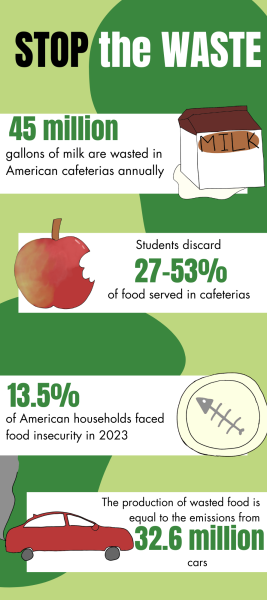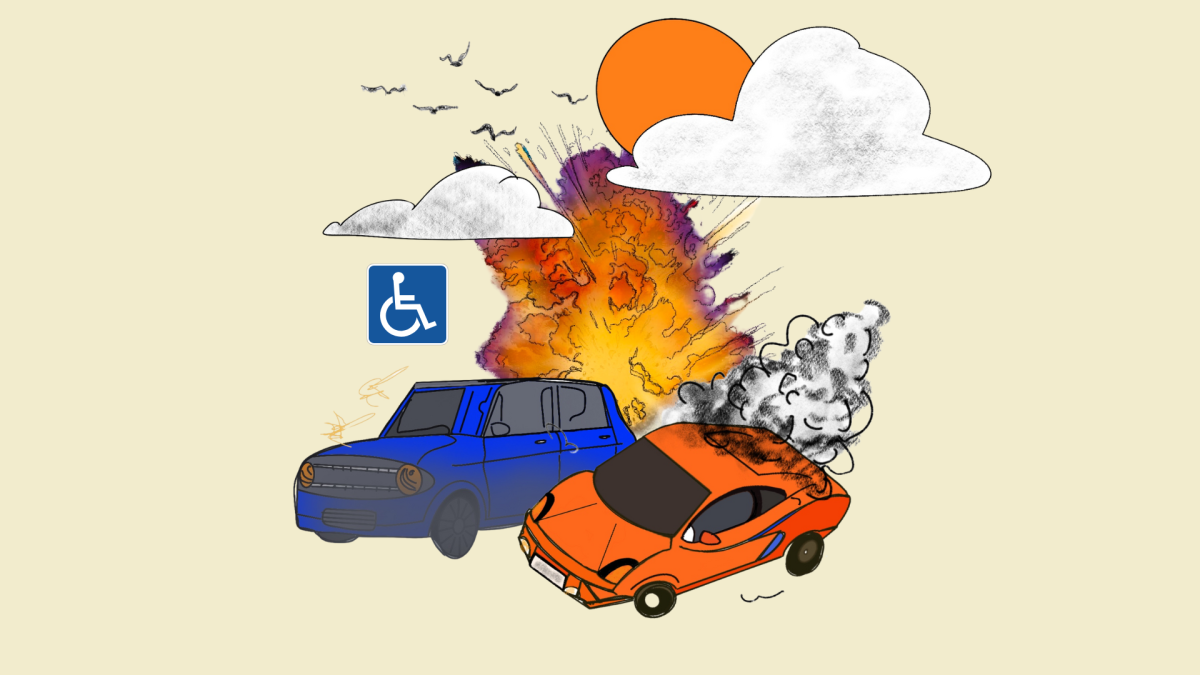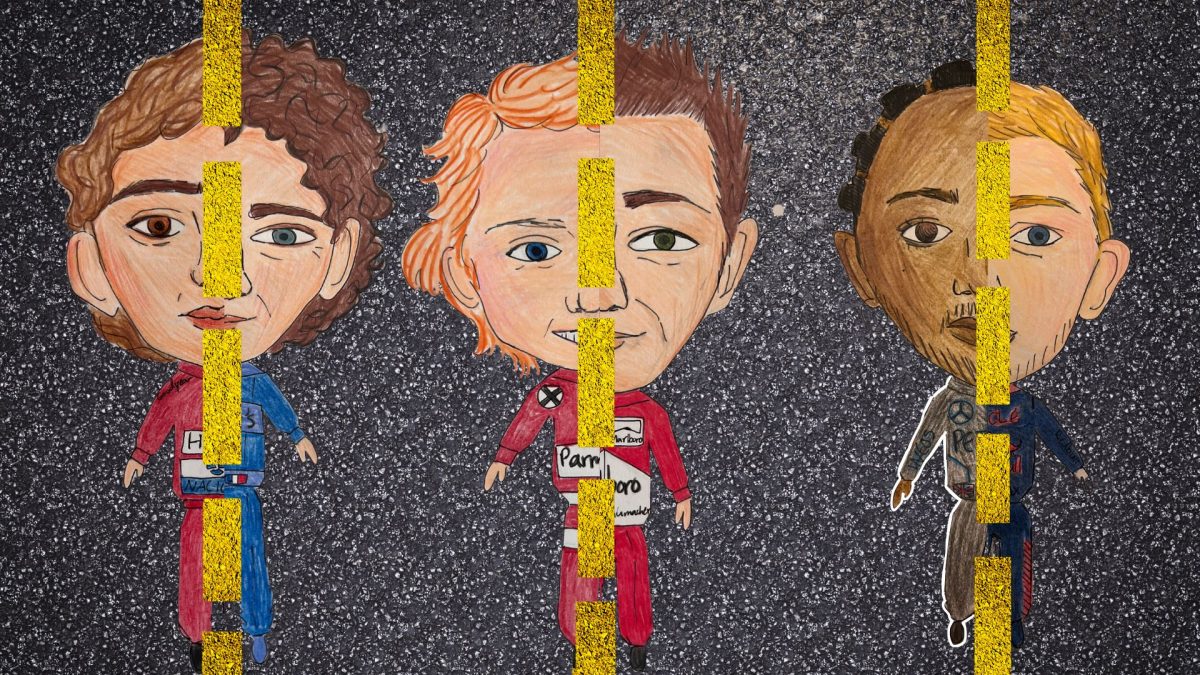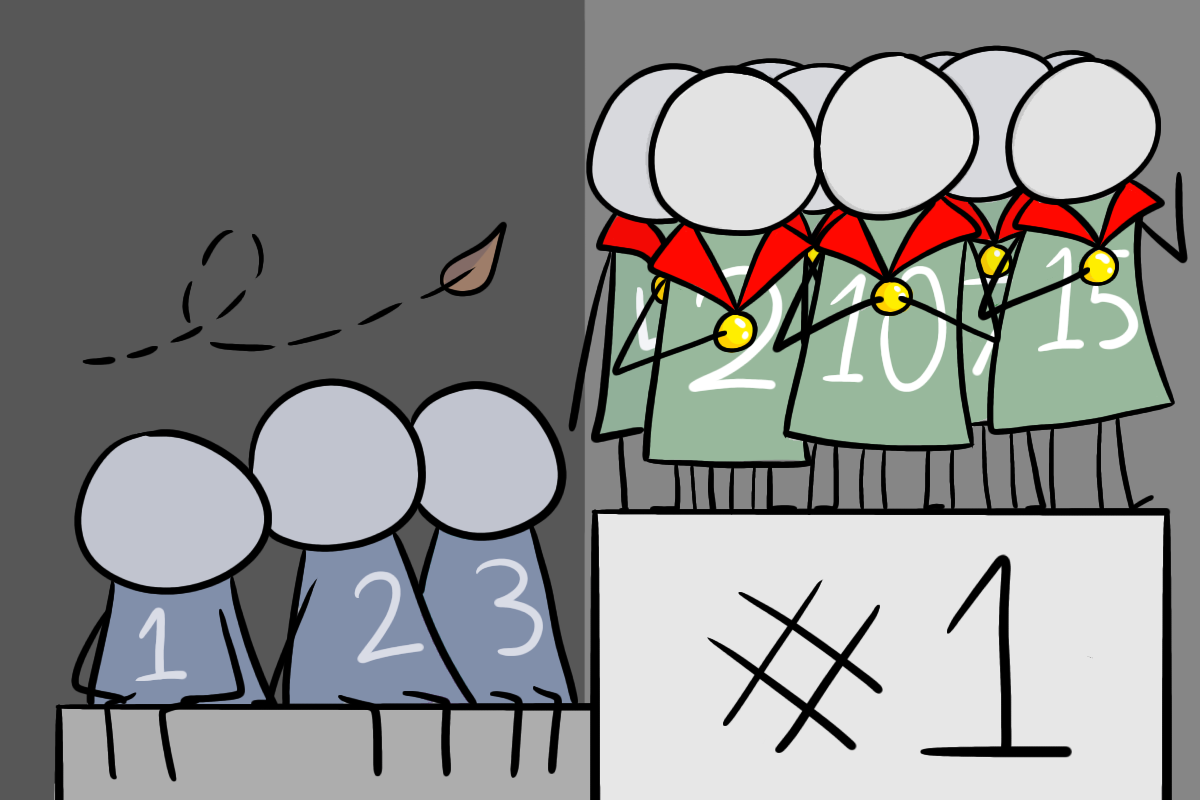It’s almost C lunch, and your stomach is grumbling; you push down the hunger and hope that your classmates didn’t hear. After shoving aside ravenous students in the lunch line, you finally reach the buffet; the sweet and savory scents of the orange chicken dance toward you while the crunchy potato cubes tempt you. But remember this: be aware of what you put on your plate. You shouldn’t bite — or buy — more than you can chew.
Globally, America leads in the percentage of school food wasted, with students discarding about 27-53% of total food served. About 530,000 tons of food and 45 million gallons of milk are wasted in American school cafeterias annually, wasting more than $1.7 billion worth of uneaten food. Not only do landfills get filled with food, but this waste also contributes to major environmental, social and economic issues.
Food waste causes a chain of environmental effects that amplifies the overall problem: climate change. As the expected global population grows to 9.8 billion by 2050, food production will need to increase by 56% to feed everyone. Agriculture is already the leading cause of biodiversity loss around the world, as converting wildlands to croplands destroys habitats that wildlife needs to survive.
Tossing carrots or an apple every day doesn’t seem like much; however, when food is thrown away, the energy and water used to grow, harvest, transport and package is wasted as well. Dumped food begins to rot, producing methane, a greenhouse gas 28 times as potent as carbon dioxide at trapping heat in the atmosphere. Greenhouse gas emissions trap sun radiation and directly cause rising temperatures, extreme weather patterns, ocean acidity and glacier melting. In the United States alone, the production of wasted food generates the equivalent of 32.6 million cars worth of greenhouse gas emissions.

The consequences of food waste are often overlooked when it doesn’t directly impact people. The U.S. is not facing a food shortage but a food distribution and waste crisis. The U.S. Department of Agriculture estimated that 13.5% of American households, or 18 million people, faced food insecurity in 2023. This hunger crisis primarily affects the growth of children and teens; hungry children suffer from more health concerns, and students cannot focus on empty stomachs. Food being tossed out can be redistributed to other children or families in need instead of ending up in the landfill.
To reduce food waste, the ICCSD has implemented sustainable practices into its distribution and discard policy. According to ICCSD Director of Nutrition Allison Demory, the school district serves over 11,800 meals every day. Each step of the meal planning process is centered around diminishing waste; nutrition staff create menus that both sound and taste appetizing for students, and salad bars are set out so students only take what they need. The district composts leftover produce and donates meals to Table 2 Table, an organization that collects and distributes surplus food to food pantries or people in need.
To aid these efforts, students should take action to ensure they aren’t contributing to the wasted food. While in the lunch line, students should only take what they can eat, or save it for later. Unopened or unpeeled food should be shared through community baskets and fridges. Students can organize clubs that educate their peers on sustainable food systems, such as gardening and composting. Households should start their own compost bins and keep track of food expiration dates to prevent spoilage.
In addition, the legislative process can play an important role in reducing food waste; Vermont and California passed laws that made throwing away food scraps illegal. This can put pressure on school districts and businesses to compost or donate scraps to local farmers. Similarly, students should contact their local representatives or propose their own bill to tackle this problem.
From mindful shopping to advocating for new legislation, there are many solutions to curb food waste. Process this reality, chew on these solutions and take action to protect the environment and create a better future.

























